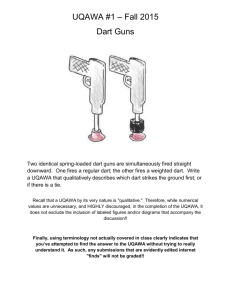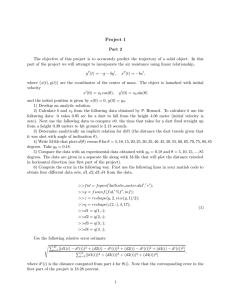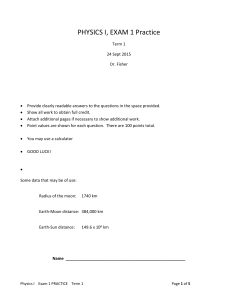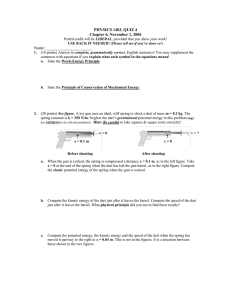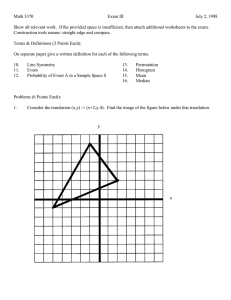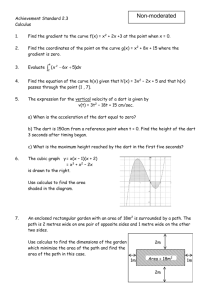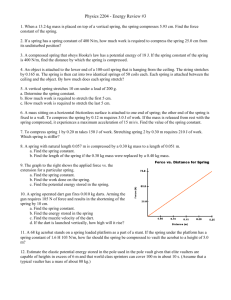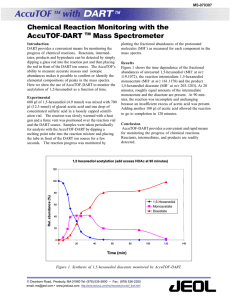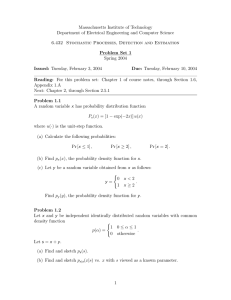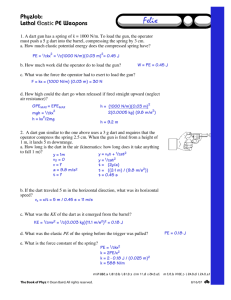AP physics for the week of February 8
advertisement
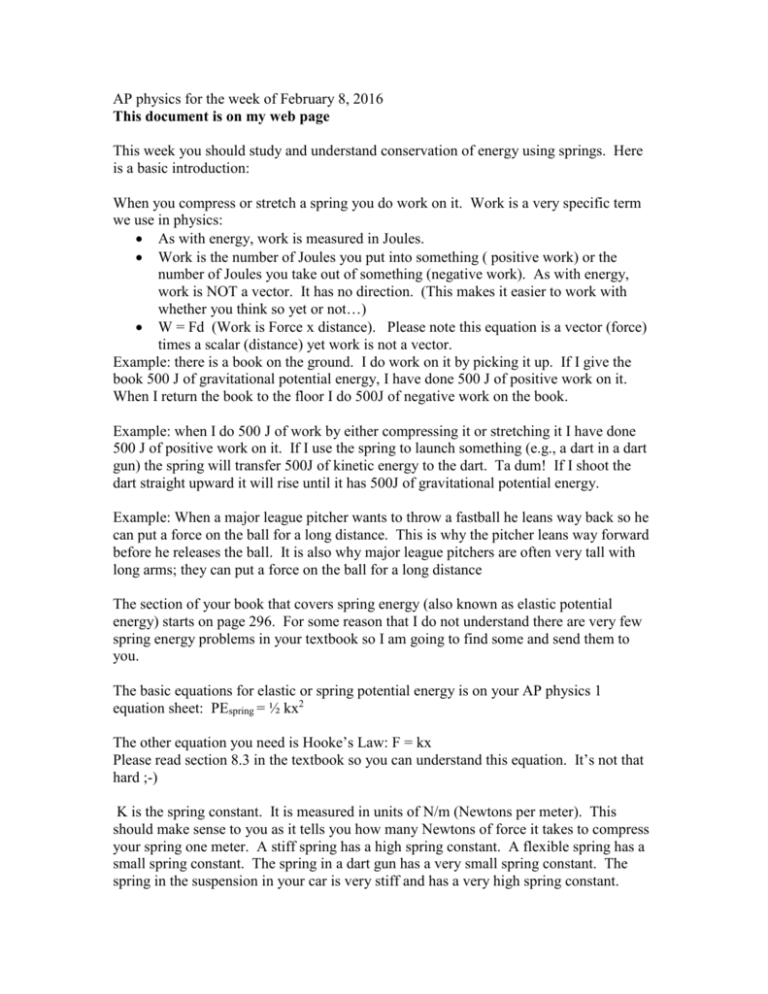
AP physics for the week of February 8, 2016 This document is on my web page This week you should study and understand conservation of energy using springs. Here is a basic introduction: When you compress or stretch a spring you do work on it. Work is a very specific term we use in physics: As with energy, work is measured in Joules. Work is the number of Joules you put into something ( positive work) or the number of Joules you take out of something (negative work). As with energy, work is NOT a vector. It has no direction. (This makes it easier to work with whether you think so yet or not…) W = Fd (Work is Force x distance). Please note this equation is a vector (force) times a scalar (distance) yet work is not a vector. Example: there is a book on the ground. I do work on it by picking it up. If I give the book 500 J of gravitational potential energy, I have done 500 J of positive work on it. When I return the book to the floor I do 500J of negative work on the book. Example: when I do 500 J of work by either compressing it or stretching it I have done 500 J of positive work on it. If I use the spring to launch something (e.g., a dart in a dart gun) the spring will transfer 500J of kinetic energy to the dart. Ta dum! If I shoot the dart straight upward it will rise until it has 500J of gravitational potential energy. Example: When a major league pitcher wants to throw a fastball he leans way back so he can put a force on the ball for a long distance. This is why the pitcher leans way forward before he releases the ball. It is also why major league pitchers are often very tall with long arms; they can put a force on the ball for a long distance The section of your book that covers spring energy (also known as elastic potential energy) starts on page 296. For some reason that I do not understand there are very few spring energy problems in your textbook so I am going to find some and send them to you. The basic equations for elastic or spring potential energy is on your AP physics 1 equation sheet: PEspring = ½ kx2 The other equation you need is Hooke’s Law: F = kx Please read section 8.3 in the textbook so you can understand this equation. It’s not that hard ;-) K is the spring constant. It is measured in units of N/m (Newtons per meter). This should make sense to you as it tells you how many Newtons of force it takes to compress your spring one meter. A stiff spring has a high spring constant. A flexible spring has a small spring constant. The spring in a dart gun has a very small spring constant. The spring in the suspension in your car is very stiff and has a very high spring constant. X is simply the distance that you have either stretched or compressed your spring (measured in meters). Here are some introductory spring problems. I will also send some AP problems that include springs. 1. Take g = 10 m/s2 and use F = kx (don’t forget Weight=mass x g) 1. A mass of 630g is hung on a spring. Using Force = mass x gravity, what is the force of the mass, acting on the spring? Answer: 6.3N 2. If a 4N weight is hung on a spring, and it extends by 0.2m, what is the spring constant (k)? What do you think the units are? (20 N/m) 3. What Force would be needed to extend a spring with a spring constant k=5, 0.3 m? (1.5N) 4. A spring extends by 10 cm when a mass of 100 g is attached to it. What is the spring constant? (10N/m) 5. What will be the extension of this spring if the load is a) 4N and b) 75 g? (40cm and 7.5cm).
